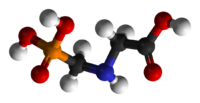
Photo from wikipedia
Abstract Neonicotinoid insecticides are the most commonly used insecticide in the world and can have significant sub-lethal impacts on beneficial insects, including bumblebees, which are important pollinators of agricultural crops… Click to show full abstract
Abstract Neonicotinoid insecticides are the most commonly used insecticide in the world and can have significant sub-lethal impacts on beneficial insects, including bumblebees, which are important pollinators of agricultural crops and wildflowers. This has led to bans on neonicotinoid use in the EU and has resulted in repeated calls for the agrochemical regulatory process to be modified. For example, there is increasing concern about 1) the underrepresentation of wild bees, such as bumblebees, in the regulatory process, and 2) the failure to determine how agrochemicals, such as neonicotinoids, interact with other commonly occurring environmental stressors, such as parasites. Here, we modify an OECD approved lethal dose (LD50) experimental design and coexpose bumblebees (Bombus terrestris) to the neonicotinoid thiamethoxam and the highly prevalent trypanosome parasite Crithidia bombi, in a fully crossed design. We found no difference in the LD50 of thiamethoxam on bumblebees that had or had not been inoculated with the parasite (Crithidia bombi). Furthermore, thiamethoxam dosage did not appear to influence the parasite intensity of surviving bumblebees, and there was no effect of either parasite or insecticide on sucrose consumption. The methodology used demonstrates how existing ring-tested experimental designs can be effectively modified to include other environmental stressors such as parasites. Moving forward, the regulatory process should implement methodologies that assess the interactions between agrochemicals and parasites on non-Apis bees and, in cases when this is not practical, should implement post-regulatory monitoring to better understand the real-world consequences of agrochemical use.
Journal Title: Environmental Entomology
Year Published: 2022
Link to full text (if available)
Share on Social Media: Sign Up to like & get
recommendations!